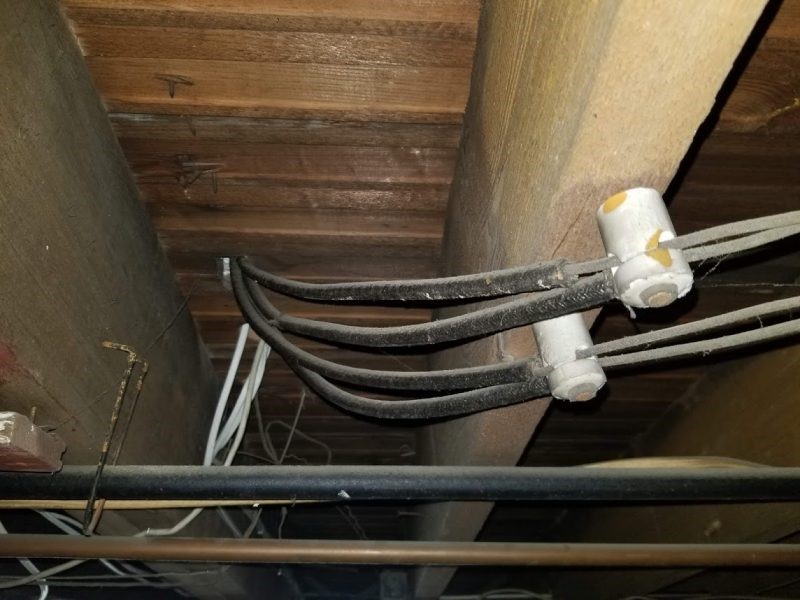Knob and Tube (K&T) wiring hasn’t been used in new construction since the mid 1950’s, thus K&T is certainly an aging technology. Surprisingly, Knob and Tube wiring, in excellent condition, is not dangerous. Nevertheless, home buyers & home owners should consider the potential risks of K&T and seek the guidance of a licensed electrician with questions or concerns.
Items to Consider with Knob and Tube Wiring Systems:
- Stretching and sagging wires can lead to unsafe contact between the wires.
- Over time insulation can weaken and breakdown, sometimes exposing the copper wiring.
- No ground wire: modern wiring has a ground wire to reduce the risk of electrocution, fires and damage to electronics.
- Knob and tube wiring is not rated as moisture-safe. Therefore, it is a shock hazard when used in damp environments, such as: kitchens, bathrooms, laundry rooms, wet bars, and the out-of-doors.
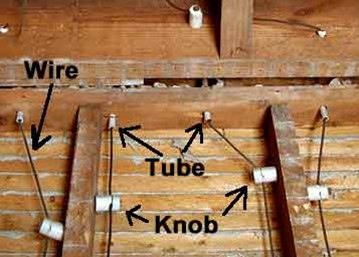
Compared to current standards, Knob and Tube wiring was designed for much lighter electrical loads. Furthermore, in the 1950’s most of today’s appliances didn’t even exist! 20th century appliances and our connected lifestyle puts a heavy demand on home electrical systems. As a result of this increased demand, Knob and Tube wiring is often overloaded. Therefore, wires overheat and become brittle. These weakened wires are hidden hazards inside attics, walls & crawl spaces.
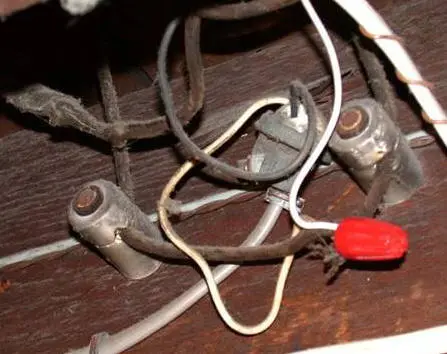
Another problem with Knob and Tube is that many times the original wiring has been modified with unsafe splices. These splices, meant to expand the system, can easily overload the circuit and thus create unsafe operating conditions.
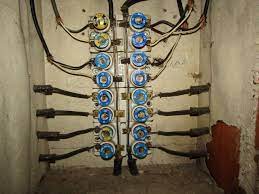
The fuse box is another potential problem area. In order to reduce the frequency of blown fuses, many homeowners replace properly sized fuses with larger ones. Larger fuses do prevent the fuses from blowing, but these bigger fuses allow the wires to operate in overloaded conditions.
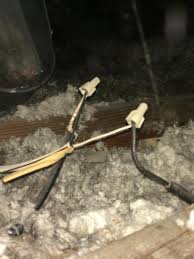
Insulation and Knob & Tube wiring can be a dangerous combination. Knob and Tube wiring relies on clear space to disperse heat. When insulation is placed around the wires, heat can’t escape. Overheating wires are a fire hazard. The National Electric Code (NEC) states that Knob and Tube wiring should not be used in walls, ceilings and attics with loose, rolled or foam insulation covering the wires.
Insurance companies tend to be reluctant to insure homes with Knob and Tube wiring. Some insurance companies refuse to insure homes with K&T altogether, while others may require an inspection and the wiring found ‘safe’ by a qualified electrician. Due to the greater risk of accidents and electrical fires, homes with K&T wiring typically have higher insurance premiums.
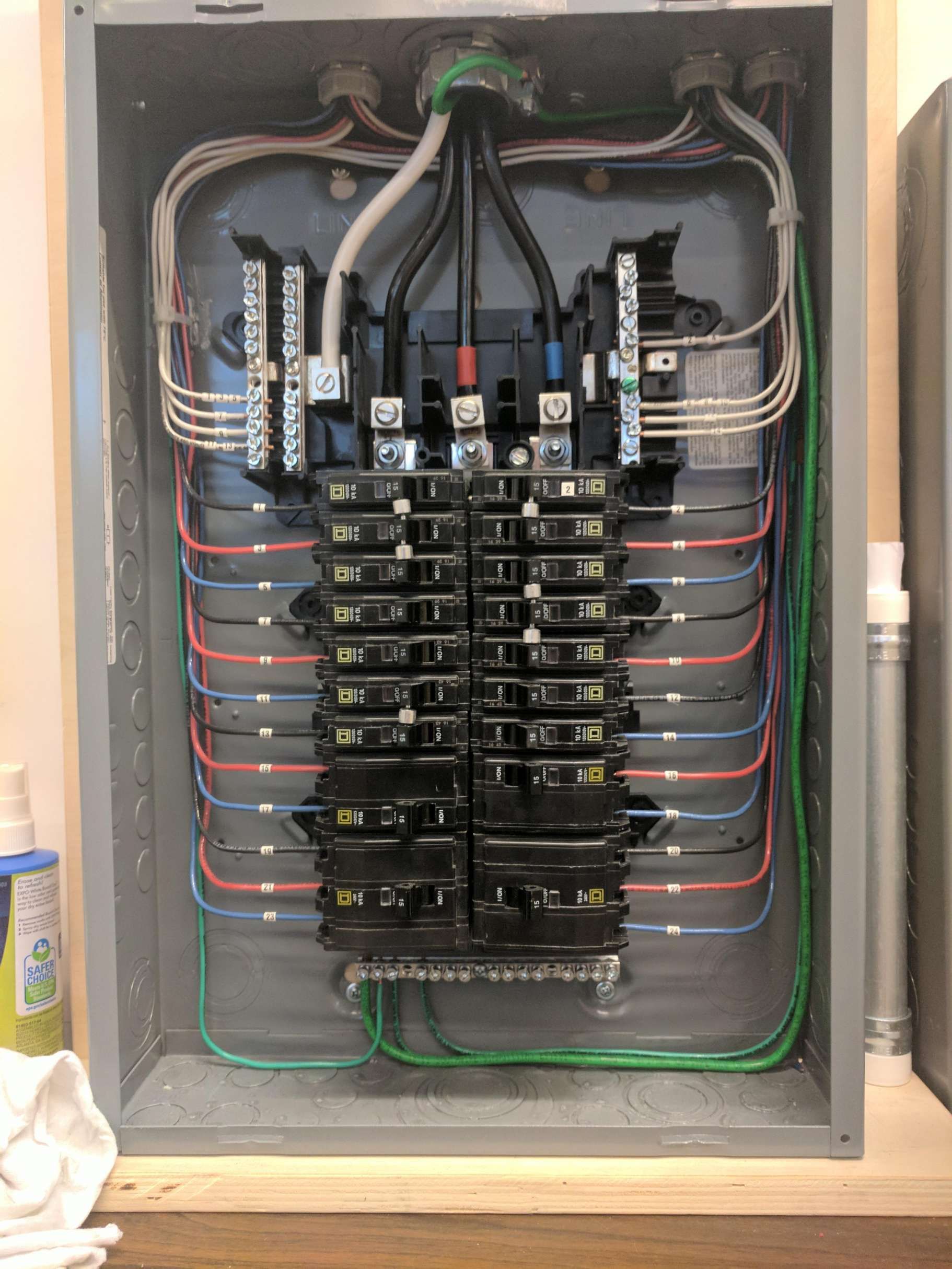
Replacing Knob and Tube wiring can be expensive. Upgrading K&T may include replacing the wiring from the street to the meter, from the meter to the circuit breaker box, thru the walls to the desired location. The electrical work needs to be permitted and meet current code requirements. Thus, based on the extent of the retrofit, costs vary widely but can run into the tens-of-thousands of dollars.
The bottom line is that Knob and Tube wiring can be a safety hazard in your home. Upgrading the wiring is an investment that will ensure your home can meet modern electrical load requirements and it will give you peace-of-mind that you have taken the steps necessary to protect your home and family.
Steven M Jansen
c 425-417-7561
SteveJ@Windermere.com

 Facebook
Facebook
 X
X
 Pinterest
Pinterest
 Copy Link
Copy Link
